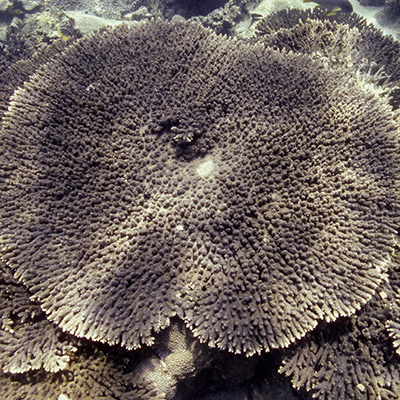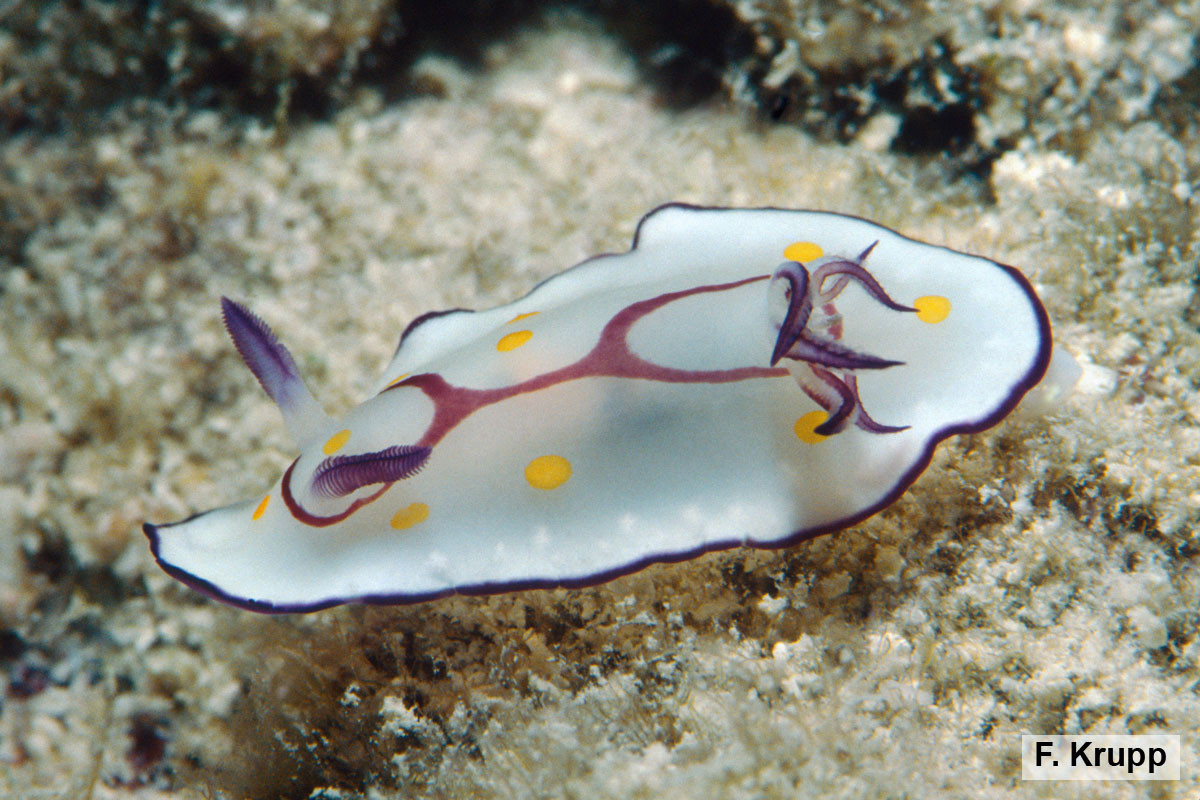Name: Goniobranchus annulatus
Common name: Ringed Goniobranchus, Polka-dot Chromodorid
Local name:
Scientific name: Goniobranchus annulatus
Classification: Class: snails and slugs; order: nudibranchs, sea slugs; family: chromodoridids (Chromodorididae)
Synonym: Previously known as Chromodoris annulata; another name sometimes used, but invalid, is Glossodoris annulata.
Size: Goniobranchus annulatus is about 4 6 cm in length, but can grow to a maximum size of 10 cm.
Habitat:
This sea slug can be found from intertidal rock pools at the low tide mark to offshore reefs, down to depths of 30 40 m. It seems unaffected by relatively strong water currents on reef fronts and over coral rubble and is usually found in small groups crawling together. It feeds specifically on sponges, even favoring a particular species. Members of the family Chromodorididae acquire the chemical defenses from their prey sponge and store them in special glands within their bodies, rendering themselves distasteful. Their bright color patterns may be intended to warn a potential predator (mainly fish with good color vision) that they are not edible.
Distribution:
The species is found in tropical and temperate seas of the western Indian Ocean and has been reported from as far east as Thailand. It is relatively common along the coast of eastern Africa and in the Red Sea and Arabian Seas, including the Arabian Gulf.
Conservation status:
Goniobranchus annulatus has not yet been assessed for the IUCN Red List of Threatened Species.
Description:
Goniobranchus annulatus is a rather large, smooth and soft-bodied marine gastropod belonging to the order Nudibranchia. Having evolved from shelled and coiled ancestors, nudibranchs shed their shell and undergo a secondary uncoiling of the body during their larval stage and therefore appear shell-less and bilaterally symmetrical as adults. In this species, the elongate body is relatively low and wide. The mantle, which is the dorsal body wall that covers the visceral mass, protrudes outward, with its sides folding down to overlap the body contour, the frontal overlap wide and often undulating. The foot, a muscular organ with a flattened base, extends along the underside, with its tapering rear end protruding below the mantle, and performs a crawling locomotion. Near the rear end of the body, the gills project vertically, shaped into branchial plumes arranged in a circle around the anus; they are quadrangular in cross-section and vibratile. Near the front, a pair of tentacle-like structures called rhinophores protrudes dorsally from the animal’s head. Rhinophores are chemosensory organs able to detect chemicals dissolved in the sea water; they are used as scent or taste receptors to locate food or mates. A tiny pair of simple eyes, able to discern little more than light and dark, is set into the body on the head. The mouth contains a rasp-like tongue called radula and a strong pair of jaws made of chitin (hardened protein). The radula is a ribbon of tiny teeth that can scrape off and cut up food particles. Numbers, shapes and patterns of the radular teeth are important diagnostic characters in species identification. This beautiful species is easily recognized by its unique coloration pattern: The whole body is translucent white, covered in medium-sized raised yellow-orange spots on the back and sides. The mantle has a purple border and two distinctive purple rings on the dorsal surface, one around the rhinophores and the other surrounding the gills. The same purple color is present on the lamellae of the rhinophores, along the four edges of each gill and sometimes on the anterior underside of the mantle. In specimens from the Arabian Gulf, the two purple rings around rhinophores and gills are connected mid-dorsally by a single purple line.








